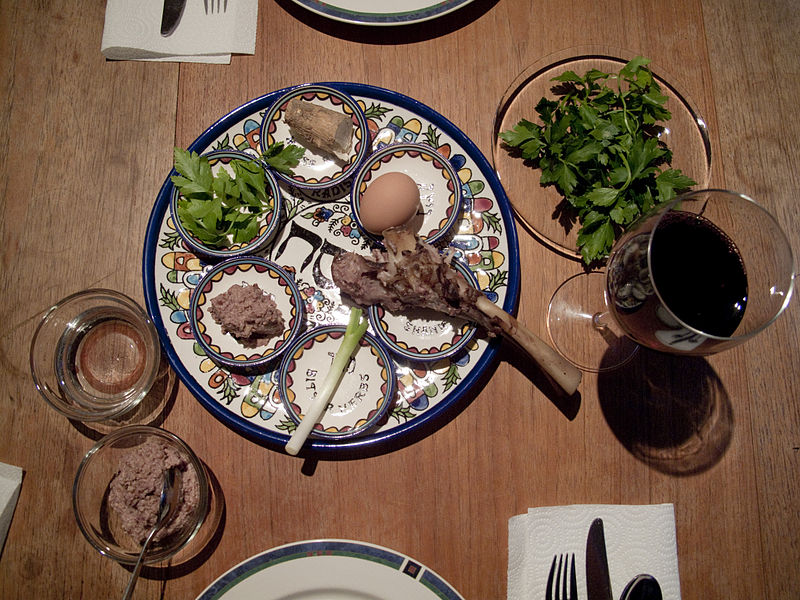
It’s impossible to think of Israel without thinking of history and, for oenophiles, kosher wine. On the land where some of today’s most cherished traditions began also sits one of the oldest viticulture areas filled with as many historical twists, quirks and rules as the more known, more storied lands of France. And while Portugal claims the first appellation laws, kosher wines are the wines with the oldest regulating rules in the wine world.
The Bible is speckled with references to vineyards and grape juice with a certain intoxicating effect. For much of the modern era, however, kosher wines have been associated with sticky sweet wine pressed from Concord grapes. That isn’t today’s story. There are five wine producing regions of Israel: Galilee, Shomron, Shimshon, Jerusalem Mountains and Negev. Outside of Israel, kosher wine is being made in New York, California and even Bordeaux.
Kosher wines’ bad rap comes from misunderstanding and simplification, no matter where it is made. The truth behind what makes kosher wine kosher clears up some hesitations about drinking kosher wine for those outside of the religion who are missing out on a growing wine region and industry.
What makes a wine kosher
The kosher winemaking process starts when the grapes are off of the vine. The grapes can be grown and harvested by anyone, but after harvest, everything must be done by Sabbath–observant Jews. The head winemaker, however, does not have to be Jewish as long as the Sabbath–observant staff are the only ones handling the winemaking materials and equipment.
Since grapes are a product of nature, kosher supervision isn’t needed until vinification begins.
All ingredients must also be certified kosher. Unauthorized yeasts and animal–based fining additives are not allowed. All of the equipment and storage facilities, in addition to only being used by Sabbath–observant Jews, must only be used for kosher wine.
The production method is also different between kosher wines and Passover wines. Leavening agents, such as yeast, are forbidden for Sabbath–observant Jews at the start of Passover. Yeast is required in wine production however, therefore only wild and natural yeasts or special kosher yeasts can be used to ferment Passover wines. Kosher wines are signified on wine labels by a “U” in a circle, and Passover wines have both the encircled “U” and a capital “P” on the label.
What about boiled wines?

Rabbi Moshe Feinstein
Mevushal, which literally translates to boiled or cooked, refers back to a kosher wine that has been heated to a high temperature. The extreme heating of kosher wine came into practice to allow non–Jewish people to serve and handle kosher wine without stripping it of it’s kosher designation. If it’s not mevushal, it can only be served by a Sabbath–observant Jew or else the wine loses its kosher designation.
Pouring wine for the gods onto the ground was a common pagan practice to show thanks. Rabbis wanted to ensure that Jewish people weren’t served a glass of wine that had been associated with an idolatrous offering, and ruled that only cooked wine could be served by a non–Jewish person.
Boiling, as to be expected, strips wine of flavors, aromas and any complexities. Today’s mevushal wine is able to escape much of the nuance destruction from boiling by flash pasteurization instead of literal boiling.
Rabbi Moshe Feinstein, a teacher and authority on Jewish law who moved to New York in 1937 and served as the head of the Yeshivah Tiferet Yerushalayim, was the first rabbi to rule that pasteurizing constitutes mevushal qualities. Not all Orthodox Jews believe pasteurization is equal to boiling, but most Americans side with Rabbi Feinstein.
Going through the mevushal process with the wine must, when the wine is just pressed juice with the skins, seeds and stems, rather than right before the wine is bottled also improves the taste and aging ability. Dr. Daniel Rogov, a top critic of Israeli and kosher wine, suggests drinking mevushal wine 6–12 months from the bottled date.
Despite the many things that mevushal can do, it cannot make a non–kosher wine kosher.
Judaism's vineyard and winemaking laws
Kashrut is Judaism’s religious laws pertaining to the winemaking process, and hekhsher is the seal of approval given by a regulating organization such as the Orthodox Union.
Kosher wine, at it’s simplest, is just wine made by Sabbath–observant Jews. There are, however, a few vineyard laws that set kosher wines apart.
Orlah is a law pertaining to when fruit can first be used. The first three years of fruit of any human cultivated fruit–bearing plant cannot be used. Many winemakers, not just kosher, voluntarily give up the first years of a vine’s grapes because later years are generally accepted to produce better quality wine. Kosher vineyards must also give up a partial value of the fourth year’s crop as well.
Shmita is a law that is only relevant in Israel. Nothing can be sowed or helped in growth in Israel every seventh year. Ironically, the past two years were 2008 and 2001, widely considered two of the best winemaking years in the past couple decades. There are two loopholes to Shmita that are unequally accepted depending on where the wine is sold:
Heter mechira means permissible selling, and relates to a dubious practice that isn’t universally accepted. The winery sells the vineyard to a person who isn’t Jewish, buys the grapes, and then buys the vineyard back at the end of the year
Otzar Beit refers to the treasure of a rabbinical court and is accepted in Israel, but not in America. The community rabbinical court supervises the harvesting through hired non–Jewish workers and distributes the crop to the community. These wines cannot carry a kosher label in America.










